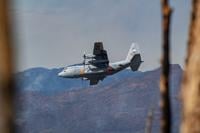Andy Love
“I hope I am wrong,” General Mike Minihan, who leads the U.S. Air Force Air Mobility Command, wrote in a memo to the personnel assigned to his command.
“My gut tells me we will fight in 2025.”
Are we ready?
The Department of Defense has looked at our National Defense Strategy and shared with a disbelieving public — we have neither the equipment nor the soldiers, sailors, Marines, or airmen to fight and win.
The Air Force plays a critical role in deterrence and is at the leading edge of any conflict. Yet retired Air Force Lt. Gen. David Deptula, Dean of the Mitchell Institute for Aerospace Studies, recently pointed out that the Air Force “lacks the capacity to fight a peer conflict, deter elsewhere, and defend the homeland as required by the National Defense Strategy.”
The Air Force’s array of 48 fighter squadrons and nine attack squadrons are today being asked to do the work of 60 squadrons, the head of Air Combat Command said recently.
Not only is the Air Force short on the advanced fighters needed to confront the Peoples Republic of China, but it is also short over 1,000 pilots needed to fill the cockpits that exist today. While it can take three years to procure a new F-35, it takes more than a decade to produce a proficient fighter pilot. Our fighter pilot crisis alone should lead any sober observer to share General Minihan’s hope that the fight does not come in 2025.
Furthermore, it’s getting worse. The Air Force can’t retain experienced pilots. The service spent more than two decades at war in Afghanistan, Iraq, and Syria, where pilots were worn down by nonstop deployment. Their families are tired of moving every two or three years. The Air Force recruits airmen but then must retain their families, and currently the grass appears much greener in the civilian sector.
The airline industry, hungry for more and more pilots as travel recovers from the pandemic, is offering military families far more money and far more stability than the active-duty Air Force. For example, Delta Airlines just announced a 34% pay raise for its pilots. After spending 10 years constantly moving and being separated by combat deployments, many fighter pilots and their young families see no viable path to continued service and choose to separate from the Air Force. The result is an ever-increasing pilot shortage.
What can we do?
Some might suggest that the Air Force increase the number of pilot training slots. But what the country needs is experienced pilots with 10 or more years of training. The reality is that there is no way to grow a 10-year pilot in less than 10 years.
Today’s Air Force includes those serving on active duty and those in the reserve component, primarily the Air National Guard. Most pilots serving in the Guard are part time, highly experienced combat pilots who departed active duty for the best of both worlds; the stability of part-time military service while also enjoying a well-paying job as a pilot for the airlines.
Historically the Active Component has been hesitant to embrace the Air National Guard as a solution to pressing Total Force challenges. Yet the increasing aggression of Russia and the PRC illustrate why we must embrace innovative thinking about the future force. Why not increase the size of those Air National Guard units in American cities that serve as a large airline hub? This would accommodate more seasoned USAF pilots who want the best of both worlds: A stable home for their families, a civilian career, and continued service to their country.
This option is very much within the reach of DoD leaders. There are at least a dozen cities across America that have both a large airline hub and an Air National Guard flying unit. Leveraging the Air National Guard also has additional benefits beyond pilot retention.
A RAND Corporation study found a “huge cost differential” between Air Force components. The differential suggests that the Air Force should move “as many tasks as possible—and the corresponding force structure—to the reserve component.” The end result would be greater overall Air Force capability for taxpayer investment. A decision like this is how we will outcompete the those who threaten our country.
The conflict in Ukraine and China’s bellicose behavior across the globe tell us that General Minihan may be right. We could be at war in two years. We cannot afford to let the inertia of decisions past carry us over a precipice from which there may be no return. We must act now to ensure our Air Force and our military as a whole are positioned to deter future conflict and prove General Minihan wrong. I’m sure he would be as happy as anyone to be wrong in this scenario.
Ultimately, it is the responsibility of Congress to recognize the global threat and fund the necessary programs to provide the country with a robust defense.
Consider contacting your state’s U.S. Congressional Representatives and Senators to insist that the Air Force recognize this compelling solution to stop the drain of experienced pilots just when we need them most.
Andy Love is a retired U.S. Air Force major general who lives in Colorado.

No comments:
Post a Comment